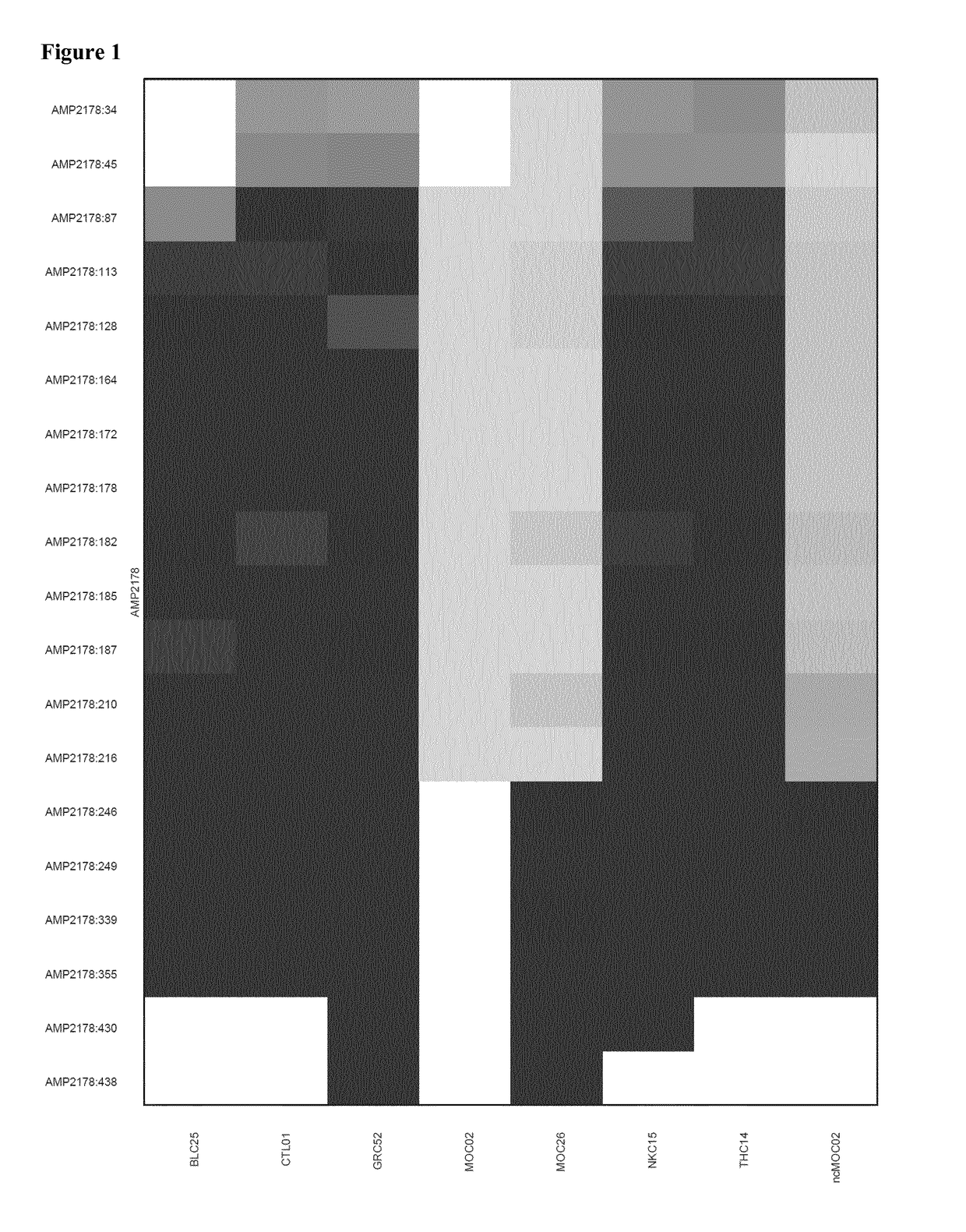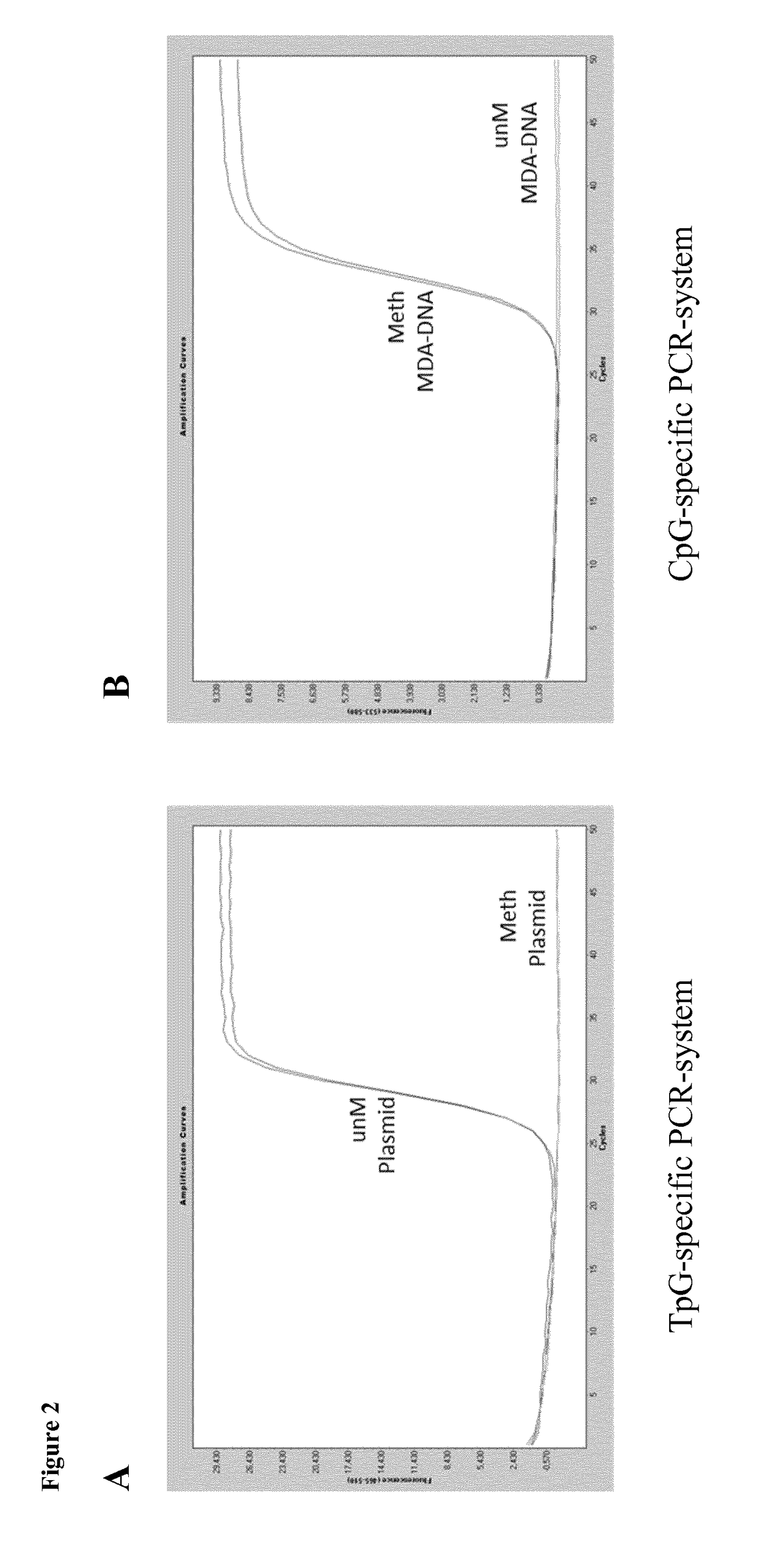Park2 as epigenetic marker for the identification of immune cells, in particular monocytes
a technology of epigenetic markers and monocytes, applied in the field of monocytes, can solve problems such as the inability to distinguish between these two
- Summary
- Abstract
- Description
- Claims
- Application Information
AI Technical Summary
Benefits of technology
Problems solved by technology
Method used
Image
Examples
example 1
[0051]In order to identify monocytes, qPCR was performed on bisulphite converted samples stemming from the human genomic region according to the following sequence (AMP2178, SEQ ID No. 1), relevant CpGs are shaded in gray:
GGGCAAAATAGATCAAAA
[0052]For the actual epigenetic profiling of the amplicon region in blood cell subtypes, the immune cell populations as analyzed were as follows (see FIG. 1)
[0053]BLC25=B-lymphocytes
[0054]CTL01=CD8+ cytotoxic T-cells
[0055]GRC52=granulocytes
[0056]MOC02, MOC26=CD14+ monocytes
[0057]NKC15=CD56+ NK-cells
[0058]THC14=CD4+ Helper T-cells
[0059]ncMOC02=“non-classical” CD16+ monocytes
[0060]The bisulfite-converted target-regions of preferred qPCR-assay-system as developed were:
TpG-specific (SEQ ID NO. 2):AAACAAAATAAATCAAAACpG-specific: (SEQ ID NO. 3):AAACAAAATAAATCAAAA
[0061]The respective sequence of the assay-target region is underlined.
[0062]The following primers and probes were used for the qPCR:
Forward amplifica-2178rGAGTAATTTGTTTGGAAGAGGA (SEQ IDtion pri...
PUM
| Property | Measurement | Unit |
|---|---|---|
| Fraction | aaaaa | aaaaa |
| Fraction | aaaaa | aaaaa |
| Fraction | aaaaa | aaaaa |
Abstract
Description
Claims
Application Information
 Login to View More
Login to View More - R&D
- Intellectual Property
- Life Sciences
- Materials
- Tech Scout
- Unparalleled Data Quality
- Higher Quality Content
- 60% Fewer Hallucinations
Browse by: Latest US Patents, China's latest patents, Technical Efficacy Thesaurus, Application Domain, Technology Topic, Popular Technical Reports.
© 2025 PatSnap. All rights reserved.Legal|Privacy policy|Modern Slavery Act Transparency Statement|Sitemap|About US| Contact US: help@patsnap.com



